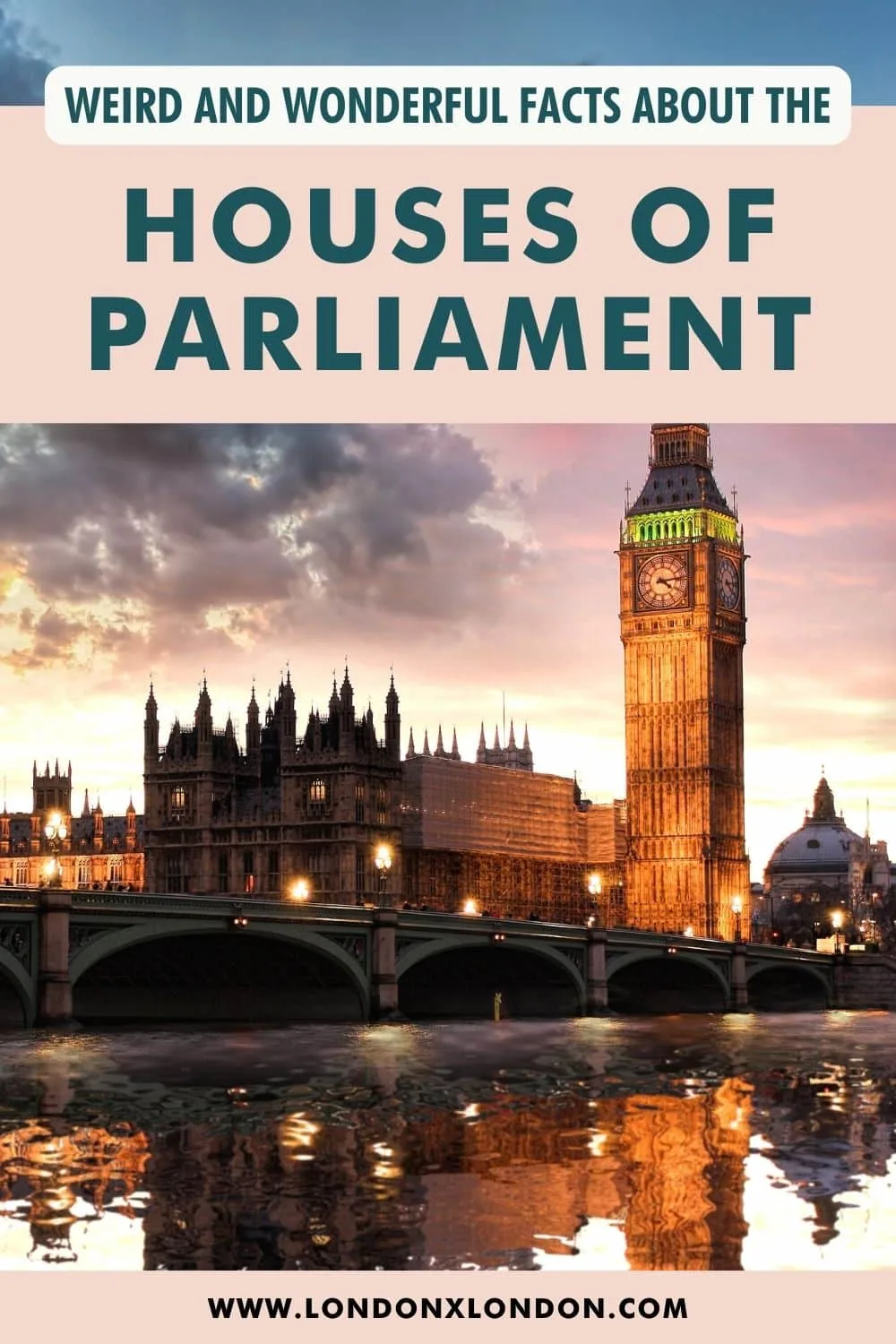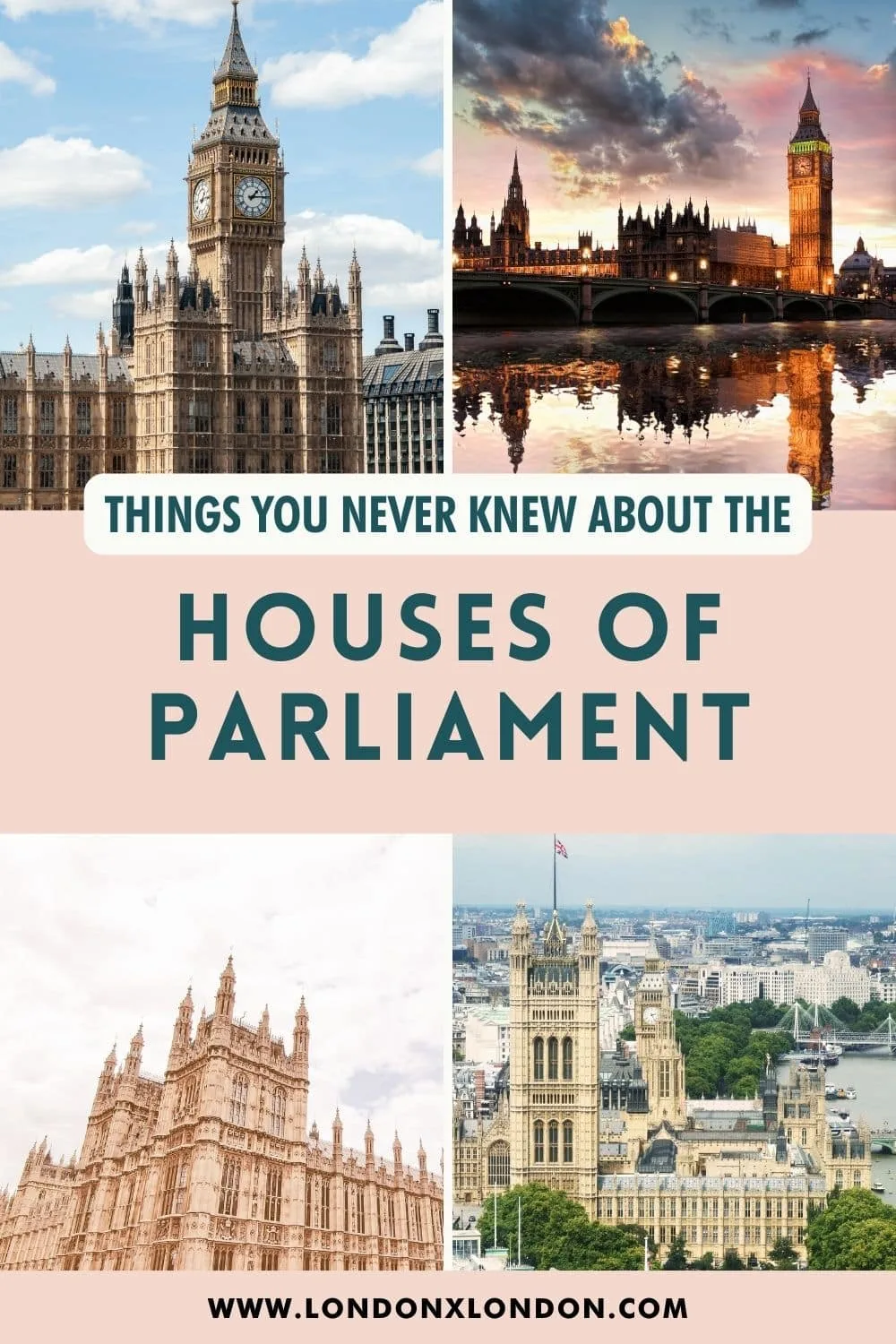Want to find out about parliament’s numerous history and oddities? Here are 32 cool and interesting facts about the Houses of Parliament.
The Houses of Parliament shape the lives of every single citizen in the UK, but how much do you really know about it?
We recently visited Parliament on a tour and was fascinated by the wealth of information, quirky and straight-up weird facts we discovered through the course of the morning. A little more digging into this Westminster gem, and then a little more revealed so many of the strange and wonderful facts hidden within Parliament’s walls.
Want to find out more? Here are 32 facts about Parliament we’ll bet you never knew.
Weird and Wonderful Houses of Parliament Facts
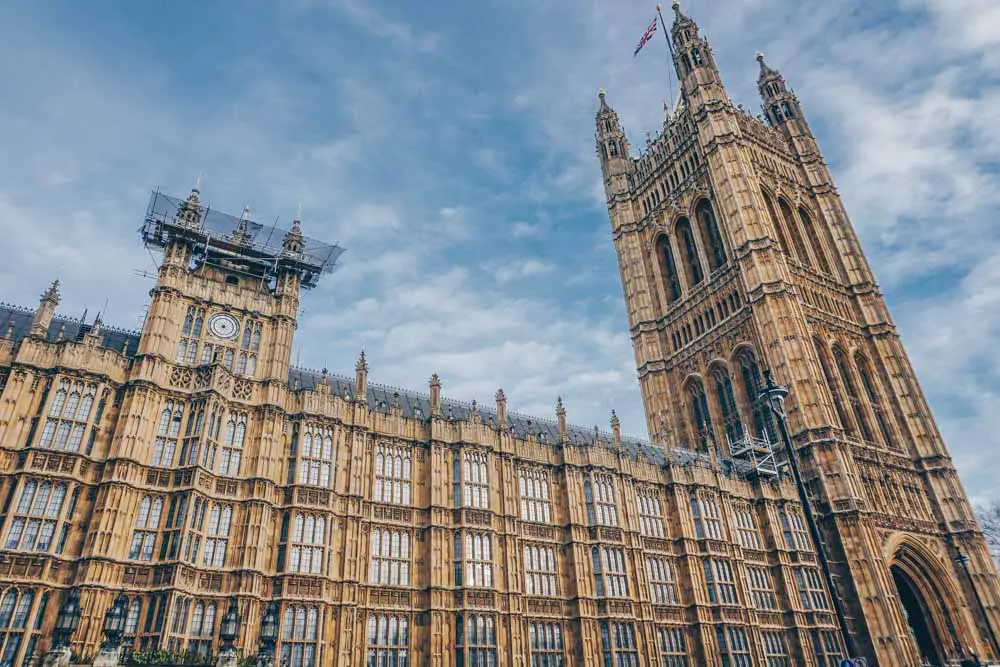
You’re Not Allowed to Wear a Suit of Armour into Parliament
The Houses of Parliament do not have a dress code but you definitively are not allowed to wear a suit of armour. The law is set out in the Statute forbidding Bearing of Armour or Coming Armed to Parliament Act 1313 and was enacted to deal with the then noblemen’s pesky habit of using armed force in order to cause trouble – and we thought today’s parliament could get fiery.
Parliament Considered Abandoning the Palace of Westminster Because the River Thames Used to Smell so Bad
The whole drama goes under the name of The Great Stink of 1858. The river smelt so bad that Parliament first tried to dip their curtains in a mix of lime and chloride to hide the smell… to no avail.
It got so bad that they laid down a bill and made it into law in a speedy 18 days – the law paved the way for the extensive plumbing infrastructure and hygiene laws that saved London from its smelly past.
You Can Tell Whether You’re in the House of Commons or the House of Lords by the Colour of the Seats.
They love a bit of colour coding in the Houses of Parliament – it’s green for the House of Commons, red for the House of Lords and (predictably) gold for the bits used by the Monarch.
Big Ben Isn’t What You Think it is
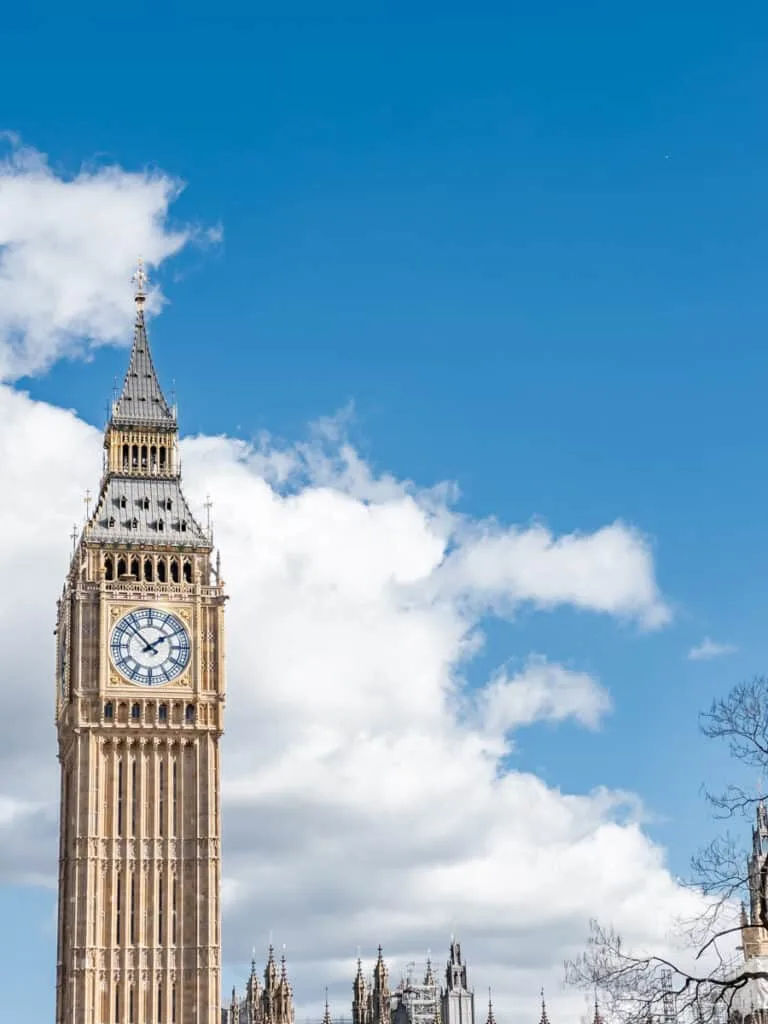
If I asked you to tell me what Big Ben was, I bet you’d look at me like I was crazy but Big Ben is not the name of the clocktower that forms part of the Palace of Westminster – it’s actually the name of the bell that is struck inside the clock. The tower is the Elizabeth Tower.
The Lords Spiritual Still Sit in the House of Lords, a Tradition that Dates Back to the Early Days of Parliament
There are two types of Peers in the House of Lords: the Lords Temporal (including the Lifetime Lords and Lords Hereditary) and the Lords Spiritual. The Lords Spiritual are the Archbishops of Canterbury and York, the Bishops of London, Durham and Winchester and a number of Church of England bishops. The practice dates back to the time of the early days of Parliament but has always been hotly contested.
The Monarch is Only Allowed to Enter the Houses of Parliament to a Certain Point.
Namely the Throne in the House of Lords – to enter further would be seen as an interference in the functioning of the elected House of Commons.
Generally the Monarch only comes to the Houses of Parliament in the State Opening of Parliament, which happens once a year.
And Instead, they Have to Send the Black Rod to Deliver Their Message to the House of Commons
The Gentleman Usher of the Black Rod or Lady Usher of the Black Rod – generally shortened to the Black Rod becuase both are a bit of a mouthful, is in charge of controlling access and preserving access to the House of Lords.
Before a couple of years ago, it was a role to which the general public paid little attention… until the prorogation of parliament that was.
One of the Black Rod’s duties is to summon the MPs for the King’s Speech – in this case for the prorogation of Parliament and many of parliament’s members were not impressed, refusing to be summoned.
It is Tradition for the House of Commons to Slam the Door in Black Rod’s Face
The Black Rod might seem like a weird enough 650-year-old tradition in itself, but the way the Black Rod gains access to the House of Commons is even stranger.
The rod knocks on the doors of the House of Commons … and they shut the door in the rod’s face. The rod then has to knock three times with their staff before being permitted to enter the House of Commons.
MPs and Peers Literally Vote with their Feet
A vote in each house is called a division because the MPs have to get up and make their way to the appropriate corridor in their house – Aye and No in the House of Commons and In Favour and Not In Favour in the House of Lords.
The House of Commons was Virtually Destroyed During The Blitz.
It was badly damaged by a direct hit in 1943 – the new design was created by Giles Gilbert Scott – who also designed the K2 telephone boxes, Battersea Power Station and Bankside Power Station (now the Tate Modern).
In Fact, The Palace of Westminster was Hit 14 Times During the Blitz.
Significant reconstruction had to take place after the end of World War II.
Countries from all over the Commonwealth Donated Materials for The House of Commons to be Rebuilt.
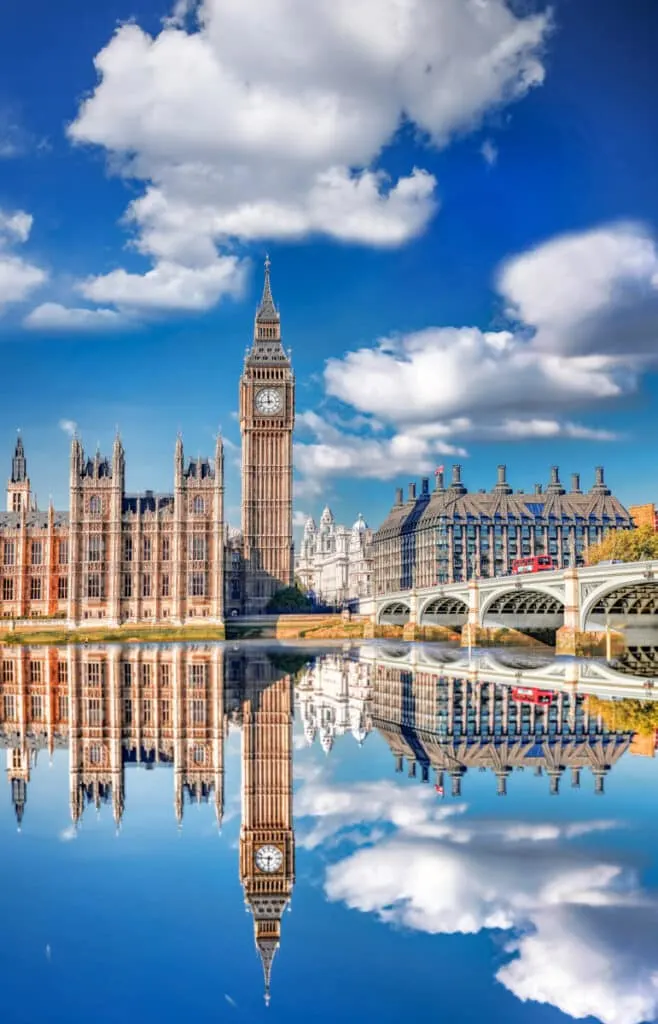
This includes the Speaker’s chair (donated by Australia) as well as a silver gilt inkstand from Dominica, the North Entrance doors to the chamber from India and the Table of the House from Canada.
Winston Churchill Designed the House of Commons so that there were Fewer Seats than MPs
His justification was that he wanted to the MPs in attendance to really want to be there. If there’s an important vote, MPs have to arrive early enough to guarantee a seat or use prayer cards to reserve their seats – in which case they have to arrive in time for the prayers at the beginning of the day and stay until they’ve finished whatever business they came for.
There’s No Speaker in the House of Lords because It’s Supposed to be Less Confrontational
Wondering why the House of Commons has a Speaker and the House of Lords doesn’t? It’s because the House of Lords are deemed to be responsible enough to regulate their speech without having to be overseen and held to heel by an independent figure.
The House of Lords Turned Down the Offer to have a Glass Screen Installed in Front of the Public Gallery
Go and visit the public gallery in the House of Commons and you’ll see a big glass screen between the MPs and the gallery but no such screen in the House of Lords. Apparently the Lords were offered a similar screen but declined.
The King’s Speech during the State Opening of Parliament is Actually Written for Him by the Government
The King’s Speech (or Queen’s Speech depending on who the monarch is) sets out the agenda for the forthcoming parliamentary year… but it’s actually written by the Government. The monarch cannot change the contents of the speech.
You Can Stand Above the Very Spot Where the Gunpowder was Discovered During the Gunpowder Plot
Stand in the Prince’s Chamber and you’re standing above the place where Guy Fawkes was discovered with 36 barrels of gunpowder in what has come to be known as the Gunpowder Plot.
Parliamentary Ping Pong is a Real Thing
But it’s not a game. Parliamentary ping pong is the nickname given to the process through which a bill passes before it is turned into law. The House of Commons send the proposed bill to the House of Lords, who scrutinise it, mark it up and send it back. It can move backwards and forwards between the houses for up to a year (the Commons as the elected house has the final say) – that is Parliamentary ping pong.
The Houses of Parliament used to be a Royal Palace.
Right up until Henry VIII’s time in fact. The Palace of Westminster had functioned as a Royal Palace, the location of the country’s highest law courts and the base for Parliament but it stopped being a royal palace in 1530s when Henry bought Whitehall Palace down the road from Cardinal Wolsey after most of the Palace of Westminster had burnt down.
And the House of Commons used to be Based in its Chapel
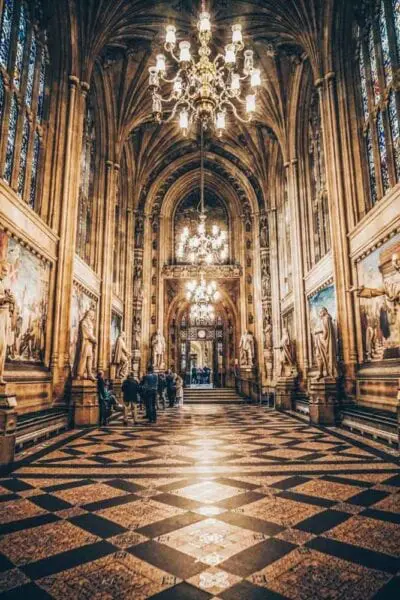
Before the House of Commons moved to the chamber we see today, it was actually based in St Stephen’s Hall, then St Stephen’s Chapel. People often think that the practice of having the two parties – the governing party and opposition party sitting across from each other was a purposeful design, when in reality it came about because in the early days they sat in the Chapel’s choir stalls.
The Palace of Westminster was Virtually Destroyed by Fire in 1834
Very little of the old palace was left, so Parliament decided to hold a competition, encouraging architects to submit their designs for the new Houses of Parliament anonymously.
But that Wasn’t the First Fire at the Palace of Westminster.
There have been several serious fires in the Palace throughout its history – notable ones include in 1263 and 1299 (when the fire damage was so bad that Parliament was held at the house of the Archbishop of York down the road in Whitehall the next year).
The Competition was won by Charles Barry and He Designed the New Houses of Parliament Alongside Augustus Pugin
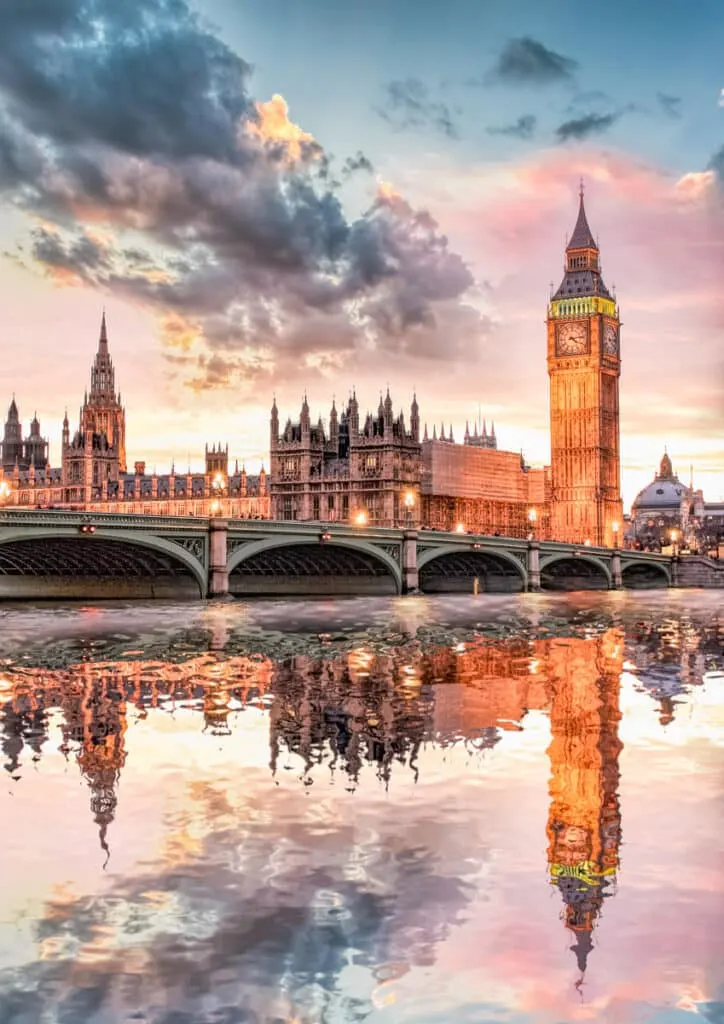
Barry’s design for the buildings of the Palace of Westminster might have won the prize after the 1834 fire, but it is Augustus Welby Northmore Pugin was obsessed with Neo-Gothic and is heralded as having a hand in the dramatic and opulent interiors we find in the Palace of Westminster today.
The Curious Statue of Lucius Cary, 2nd Viscount Falkland in St Stephen’s Hall is Missing a Spur and it’s Symbolic
The cavernous St Stephen’s Hall is lined with many statues. Peer at the statue of Lucius Cary, 2nd Viscount Falkland and you can see that the spur of one of his boots is missing. This isn’t an accident – suffragette Margery Humes chained herself to the Viscount’s statue in 1909 as a protest for women’s right to vote. The spur has been left unmended to remind Parliament that certain people have had to fight for their rights to be considered equal in this country.
The Ceiling in Westminster Hall is a Work of Genius
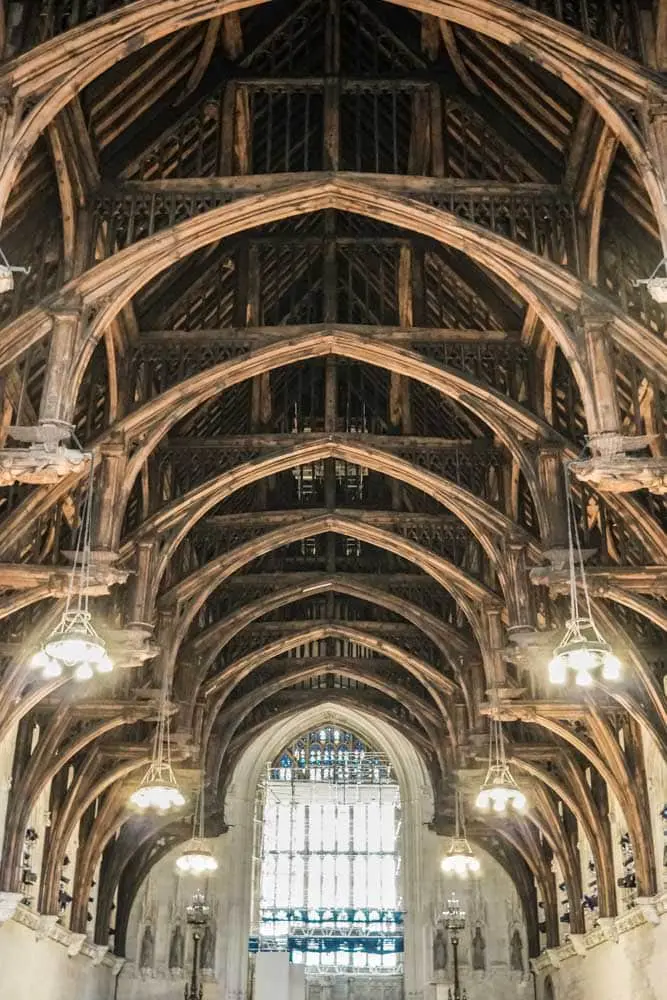
The ceiling in Westminster Hall is the largest Medieval timber ceiling in Europe and is over 600 years old. When it was first constructed, no nails were used – it slotted together like a jigsaw puzzle – albeit a jigsaw puzzle made of 660 tons of English Oak timber.
In its time, it has seen off a number of fires (including the one that razed the rest of the Palace of Westminster to the Ground), the Blitz and an attack of bugs determined to eat it for their daily meals, coming out of it all relatively unscathed.
You Can See the Spot in St Stephen’s Hall (Previously the House of Commons) where Charles I Tried to Enter Parliament to Arrest Five of its Members
Speaker Lenthall refused to allow Charles I and his armed guard to proceed to arrest five members of the House of Commons. There’s a plaque marking the spot where Charles was stopped and turned away – his actions on that day were one of the main causes of the outbreak of the English Civil War.
You Can Watch Parliament in Action
Simply go through security, walk up to the visitor’s assistant and tell them that you want to exercise your democratic duty. Or you can just say that you want to visit the Public Galleries if you want to be less dramatic about it. Either way, by entering the House of Commons, you can pride yourself on being able to do something that the Queen cannot.
The Palace of Westminster Also Used to be Home to the Main Courts of Law
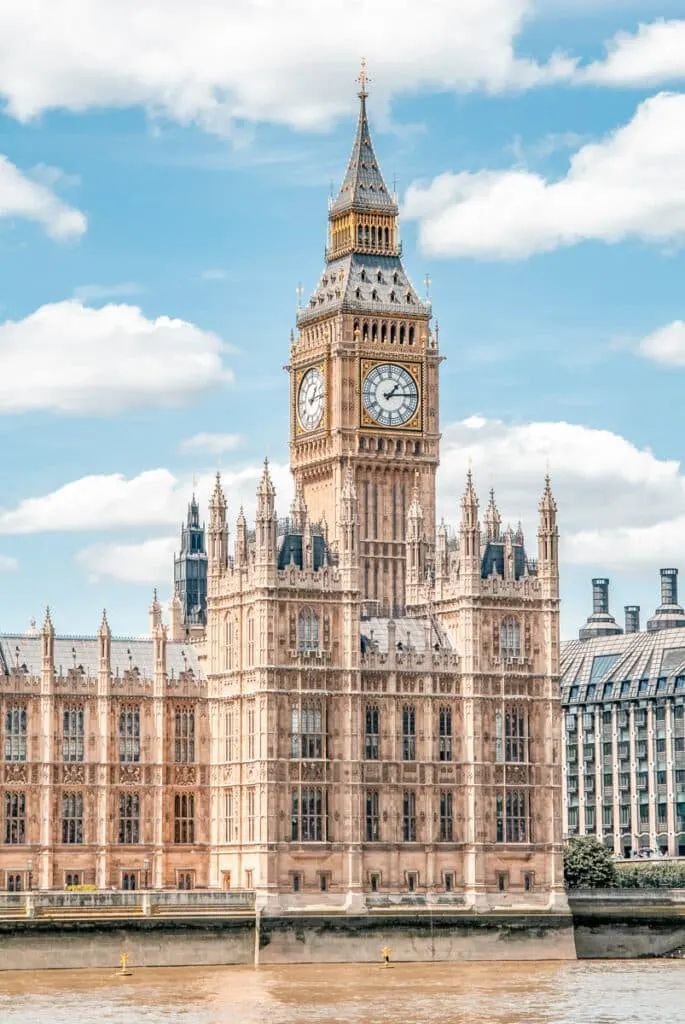
As such, it hosted some of the biggest trials between the 15th and 19th centuries, including that of Guy Fawkes and the other conspirators in the Gunpowder Plot and Charles I.
A Prime Minister was Assassinated in the Houses of Parliament.
One Prime Minister Spencer Perceval – killed by a merchant who disliked his government. He’s the only Prime Minister to have been assassinated in British history.
Two Bombs Were Planted by the IRA in Parliament’s Grounds in the 1970s.
The first in Westminster Hall in 1974 and the second in 1979 when a car bomb killed the politician Airey Neave.
Being the Speaker of the House Used to be a Dangerous Role.
When it was first created, the Speaker’s role was literally to tell the king and the lords what the House of Commons thought of their ideas. The first, Sir Peter de la Mare was imprisoned, the beginning of a number of grim turnouts for speakers over the next few centuries. Many were murdered and others died in battle.
It’s Rumoured that One Speaker Died Because He Couldn’t Go to the Loo.
Sir John Cust, speaker of the house in 1770, is said to have died as a result of being unable to leave the chair during a sitting of the House of Commons.
So, there we are – lots of weird and wonderful facts about the Houses of Parliament. How many did you know? Any more interesting facts? Drop them in the comments below, I’d love to hear them.
Read More London Tips and Guides
- How to Visit the Houses of Parliament – A Guide to Tours, Tickets and More
- 50+ Unusual Facts about London
- Curious Facts about the London Eye
- 20 Weird and Wonderful Facts about Tower Bridge
- Visiting the Ceremony of the Keys at the Tower of London
Save and Share on Pinterest
